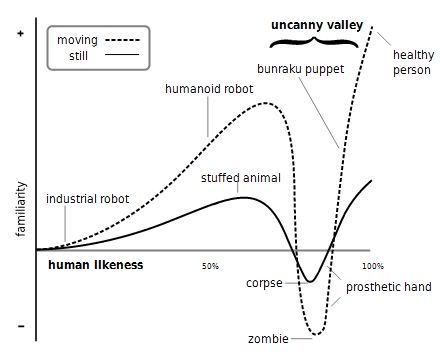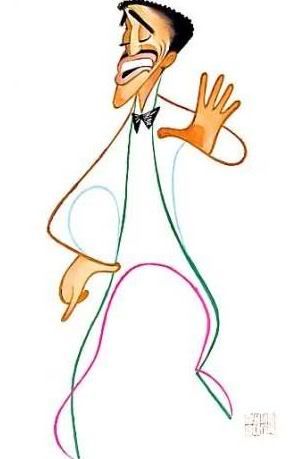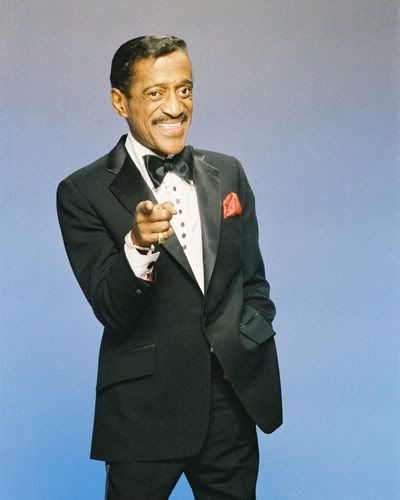What I want to talk about first is animation and, in my mind, what the philosophy behind it is.
I mentioned in my last post that animation is caricatured motion, and I'd like to delve into that a little bit. The goal of animation is not to show reality, but to distill reality and find what makes something appealing. You hear a lot about how "realistic" good animation is. And it is in some cases (such as when it has to integrate with live action). But in most cases you think of when you think of animation, it is hardly realistic. However, it is believable.
Let's take a look at this scene from The Incredibles
Now, first of all, the character designs are extremely caricatured. Nobody really looks like Huph, Bob's boss. And Bob's proportions are completely unrealistic. What's more, especially the business after 2:30, the animation is not "realistic." But it is believable and that is the word of the day. It's not about realism. It's about what FEELS real. It's about the essence of an action. Caricature, in my mind, is stripping something down to its bare bones, exaggerating that, and then carefully building on top of that. It's about getting rid of what's unnecessary and leaving only what tells a story.
And just when I thought I wouldn't rant for this post, I'm brought to a topic which almost requires it: mocap.
If you've ever seen, say, in behind-the-scenes features for video games, and there's a guy wearing a suit covered in silver balls, running and jumping around, that's mocap. It's taking someone's movements and directly copying them into a 3D rig. In 2D animation, there's a word, rotoscoping, which refers to literally tracing frames of film to produce an animation. Mocap would be the CG version of rotoscoping. And, boy, is it bad.
Now, a quick disclaimer. I think mocap works in very rare cases. In games, when you're going for ultra-realistic animation, it tends to be faster to use mocap. And in Avatar, the technical advancements in mocap and need to integrate CG characters with live action actually made mocap work very well. However, not before being touched by an animator. More on that later.
But think back to 2001's Final Fantasy: The Spirits Within. Ignore how bad of a movie it was for a second and try to remember how it looked. Here's the trailer.
Pay particular attention to the human characters. At first glance, they look pretty realistic, right? But look closer and doesn't something seem a little... off? You can't quite put your finger on it but doesn't something about it kind of make it hard to look at for some reason? Welcome to the uncanny valley.
The "uncanny valley" is a term coined back in 1970 to refer to a phenomenon in the field of robotics. The hypothesis is that, as a robot's appearance approaches a human's likeness, you feel more empathy for it. But, if you keep approaching human likeness, it starts to feel creepy and then downright scary. If you get even CLOSER to human likeness, suddenly it feels like a real human. The "valley" is the dip on this graph.

Now, I won't go into WHY the uncanny valley exists, because no one is really sure. It's almost definitely evolutionary and probably has to do with naturally feeling uneasy about people who look sick. But what's important here is that the uncanny valley definitely exists in some form or another. Here's a video from Popular Science demonstrating the phenomenon:
The thing is that humans are practically designed to recognize other humans. And if we see a human who doesn't QUITE look human, it makes us uncomfortable. And here's where mocap comes in.
Robert Zemeckis, probably most famous for directing the Back to the Future trilogy and Who Framed Roger Rabbit, decided to start making CG films starting with The Polar Express in 2004. He followed that up with Beowulf in 2007 and A Christmas Carol in 2009. And now he's producing Mars Needs Moms. Here's the trailer:
Eeeeeuuughhhhh, right? Ignore the subject matter for a second and focus on how it looks. Like the Final Fantasy trailer, isn't something about it just... wrong?
If you didn't guess it by now, Robert Zemeckis has a sudden hard-on for mocap and nobody can explain why. First off, if you want to make a photorealistic movie, why do it in CG? Second of all, if you want to do animation, why not do animation?
Mocap is not animation
If mocap is animation, then a Photoshop filter applied to a photograph is a drawing.
I'm sure I'll make another post about mocap in the near future, so I don't want to go into this too much. Suffice it to say that something about mocap makes it look vaguely weird, right?
This is where animators come in. See, if you take raw mocap data and apply it to a character rig, it just looks even worse. So, you need to have an animator come in and "fix" it. And almost always it's a thankless task and ends up being busy work. There are certainly rare cases, like Avatar, where the animators and the mocap worked together in a very successful way, but they are few and far between.
But the point is simple: if either your mocap data is not spot-on perfect, or if your characters do not look absolutely photorealistic, you will fall into the uncanny valley. Which begs the question, why use mocap?
The answer is... ¯\(°_o)/¯
Ok, ok. Mocap is quick and dirty, and it's useful in games when you need realistic character movement but don't have the time to invest in hand-animation. I get that. But for anything else, if you have the choice between an animator and using mocap, why choose mocap? But that's another post for another day. This post is about the caricature of motion and avoiding the uncanny valley.
Let's go back to The Incredibles. Suddenly, these characters who don't move like you're used to seeing and don't look at all like real humans actually feel infinitely more real than all of Zemeckis' CG characters combined. How do movies like The Incredibles avoid the uncanny valley so well?
Because they know it exists and they purposefully pull back from it.
And this is where we come full circle when it comes to caricature. The reason we caricature is because caricature is more appealing than real life. I like to think about Al Hirschfeld who was a true master of caricature. What is mind-blowing and is the key to all of this is that his drawings often look more like the people they represent than photographs of the person they represent. Let this sink in.
This looks more like Sammy Davis Jr...

Than this does

And it's because caricature is about exaggerating the things you recognize about something. Al's drawing is more like how you'd remember Sammy Davis Jr., rather than what he techincally looks like.
This is the art of caricature and why it's appealing. And when it's applied to motion, we call it animation.
My brain just got overwhelmed.
ReplyDeletenice blog! good stuff!
ReplyDeletehttp://jdmallstars.blogspot.com/
Animation advances at such a fast rate that something 5 years ago will not look as impressive as it was at that particular time. Even with something live Avatar now, I doubt it will look as good in 10 years comparatively.
ReplyDeleteThe best way is, as you stated, to go with a characteristic approach that lends it self more to style and design, rather than trying the latest and greatest technology, that will not looks so good when the effects are no longer the latest.
Nice Blog, Following and Supporting as always,
www.ulhh.blogspot.com
That's a very good point, Ashley. I remember marveling at how photorealistic Final Fantasy looked when it was released. But looking at it now, it's terribly dated. Whereas something as primitive-looking as Luxo Jr. or Toy Story still holds up, and, again, it's all about caricature, not realism.
ReplyDeleteI don't think we're even entering the uncanny valley yet, much less leaving it. There are still so many subtle mannerisms and twitches that occur all over a persons body every second that we haven't begun to map or take into account in modern animation.
ReplyDeleteIs it just me or does the picture at the bottom look that the guy they found on youtube who has that really good radio voice?
ReplyDeleteI remember the Uncanney Vally back in 30 rock, lol. I love when tracey made his own porno.
http://cmipigeon.blogspot.com
Nice blog, followed.
ReplyDeletehttp://pectoralfinnnreviews.blogspot.com/
strong post; followed, please reciprocate! skimjim.blogspot.com
ReplyDeleteSick post.
ReplyDeleteI don't understand any of this. But I tried reading! lol:P
ReplyDeletebrotosterone.blogspot.com
cool post
ReplyDeletefollowin
That is crazy! Summed up why do cg so close to real life that you wouldnt just use real people... very nice blog. can tell you put a lot of work and research into this. followed!
ReplyDeletehopefulmarine.blogspot.com
Animation is critical to the entertainment industry, just imagine the advances that will be made in the next twenty years in the quality and lifelike design. However with the current state there will always be a need for voice actors, even with fully realized animation that is indistinguishable from reality.
ReplyDeleteOnce that hurdle has been breached creating entertainment will no longer require people who look pretty, just people who understand the technology behind it.
Following and supporting
http://laymanslaboratory.blogspot.com
this is relative to my interests, subbed and followed
ReplyDeletehttp://firstgamingnews.blogspot.com/
good blog bro
ReplyDeleterelative to my interest my indeed.
ReplyDeletekeep it up man.
Quick name 3 things that arnt Jackie Chan!
ReplyDeletetehhappyplace.blogspot.com
interesting post.
ReplyDeleteIve always wondered where the term valley came from, never realized it was due to a graph. Cool info bro.
ReplyDeletetinyurl.com/rant123
Quid pro quo Fo sho.
Very interesting post, thanks
ReplyDeletehttp://the-viral-network.blogspot.com/
cracking article i thoroughly enjoyed this. I myself use caricature all the time when im sculpting as it helps makes something that feels right and adds dimension, emotions and movement to the piece. Christ if the guys i sculpted where as ripped as i sculpt them they would fall over in real life from the monstrous shoulders muscles they all have to show power.
ReplyDeleteim following this for your awesomeness
Check me out at www.crackinstuff.blogspot.com - Daily Design/Tech/Random Updates
Love the incredibles, great stuff and followed.
ReplyDeleteDon't forget to follow, check, and support often your local information hot-spot lifeformation.blogspot.com!
Very nice analysis there, detailed and thorough, def quality post. Keep it up!
ReplyDeleteHit me back :)
Hmm, I never thought of animation this way. I definitely started to notice the minute details.
ReplyDeletehttp://rhetoricrants.blogspot.com/
i completed a diploma in animation. caricature is definitely something that needs to be factored into your work to bring it to life.
ReplyDeleteawesome post. very cool stuff.
ReplyDeletefollowage.
that's cool. I was already familiar with the uncanny valley, but I like how you related it to caricatures. I never really thought about what makes caricatures appealing.
ReplyDelete